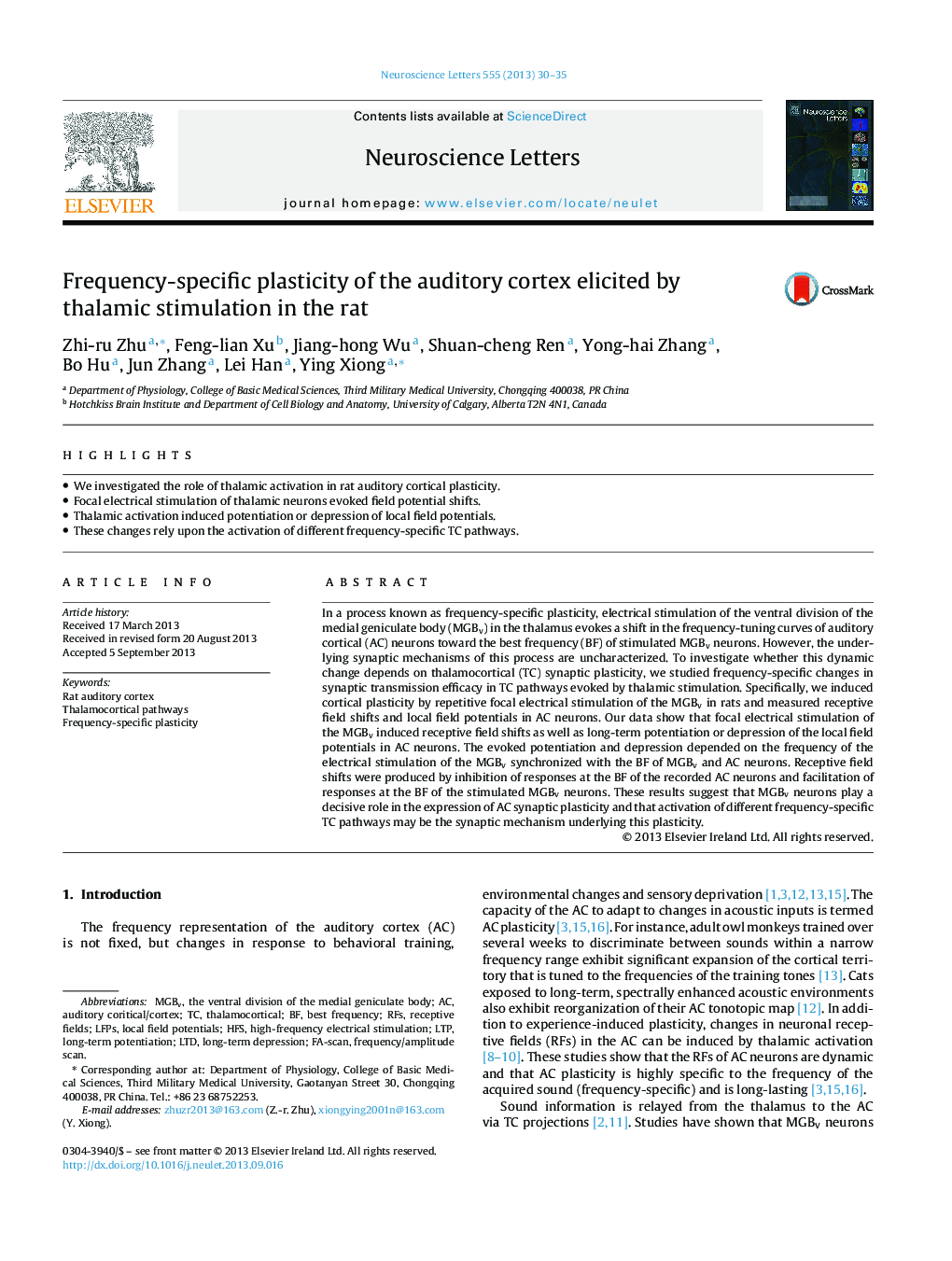| Article ID | Journal | Published Year | Pages | File Type |
|---|---|---|---|---|
| 4343901 | Neuroscience Letters | 2013 | 6 Pages |
•We investigated the role of thalamic activation in rat auditory cortical plasticity.•Focal electrical stimulation of thalamic neurons evoked field potential shifts.•Thalamic activation induced potentiation or depression of local field potentials.•These changes rely upon the activation of different frequency-specific TC pathways.
In a process known as frequency-specific plasticity, electrical stimulation of the ventral division of the medial geniculate body (MGBv) in the thalamus evokes a shift in the frequency-tuning curves of auditory cortical (AC) neurons toward the best frequency (BF) of stimulated MGBv neurons. However, the underlying synaptic mechanisms of this process are uncharacterized. To investigate whether this dynamic change depends on thalamocortical (TC) synaptic plasticity, we studied frequency-specific changes in synaptic transmission efficacy in TC pathways evoked by thalamic stimulation. Specifically, we induced cortical plasticity by repetitive focal electrical stimulation of the MGBv in rats and measured receptive field shifts and local field potentials in AC neurons. Our data show that focal electrical stimulation of the MGBv induced receptive field shifts as well as long-term potentiation or depression of the local field potentials in AC neurons. The evoked potentiation and depression depended on the frequency of the electrical stimulation of the MGBv synchronized with the BF of MGBv and AC neurons. Receptive field shifts were produced by inhibition of responses at the BF of the recorded AC neurons and facilitation of responses at the BF of the stimulated MGBv neurons. These results suggest that MGBv neurons play a decisive role in the expression of AC synaptic plasticity and that activation of different frequency-specific TC pathways may be the synaptic mechanism underlying this plasticity.
